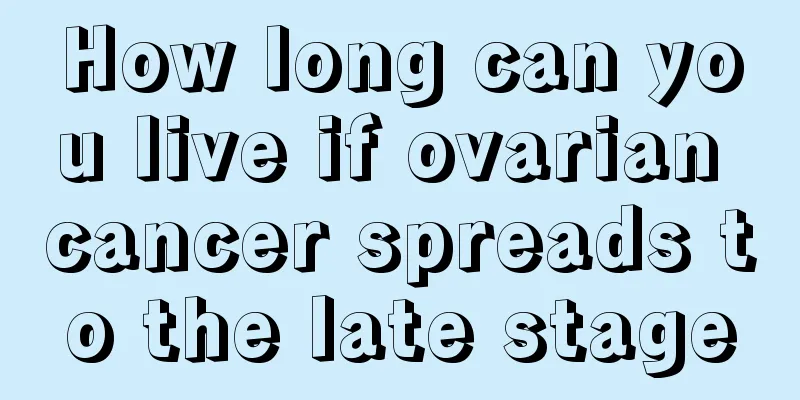Extracorporeal shock wave lithotripsy for kidney stones

|
Stones are a disease caused by improper living and eating habits. The most common site for stones to occur is the human urinary system, and the kidneys are a common site for urinary stones. When patients find that they have kidney stones, they should receive timely treatment, because when the stones grow to a larger size, surgical treatment is very difficult. The main method of treating kidney stones is extracorporeal shock wave lithotripsy. The following article will explain the relevant principles of extracorporeal shock wave lithotripsy for kidney stones. Extracorporeal shock wave lithotripsy uses shock waves to break up stones in the human body into small pieces to facilitate their excretion from the body. It, along with CT and MRI, is hailed as one of the three major new medical technologies of the 20th century. Precautions Indications Kidney and ureteral stones can be treated except those with obstruction below the stones. Most bladder stones and some urethral stones can also be treated. Some gallbladder stones can also be treated by lithotripsy. Contraindications A. Patients with uncured coagulation dysfunction; B. Patients with renal insufficiency due to renal parenchymal disease; C. Patients with severe hypertension and heart failure; D. Patients with uncontrolled diabetes; E. Patients with difficulty in locating stones, such as obese patients and children. What to prepare Relevant examinations should be completed before surgery, such as B-ultrasound, X-ray, blood and urine routine examinations. Bladder stones and lower ureteral stones require urine retention, and gallbladder stones require fasting. recover A. After urinary stones are crushed, you should drink more water, increase urine volume, and exercise more. Kidney stones need to be discharged in a certain posture, and stone-expelling drugs can also be used to facilitate stone excretion; B. During the stone excretion process, stones may block the ureter and cause pain. You should contact the treating physician in time for proper treatment; C. Regular follow-up examinations should be conducted to monitor the discharge of stones, and timely treatment should be given to those with poor efficacy, such as adding auxiliary treatments or switching to surgical treatment. In the process of breaking up stones, the shock wave will cause slight damage to the renal pelvic mucosa and the renal tissue around the stones due to the vibration and fragmentation of the stones. After a lot of clinical observation, it was found that the main complications of shock wave lithotripsy are: Hematuria: After extracorporeal shock wave therapy, almost all patients will experience hematuria of varying severity, especially those with kidney stones. Patients who have microscopic hematuria or mild macroscopic hematuria after lithotripsy generally do not need special treatment. As long as they drink more than 2000 ml of water, the hematuria will disappear naturally in 1 to 2 days. Patients with severe hematuria should go to the hospital to consult a specialist or receive treatment in time. Bladder irritation: Larger stones often contain bacteria. When the stones are crushed, the concentration of bacteria in the urine suddenly increases and causes infection. At the same time, due to the accumulation and blockage of stone sand in the narrow part of the ureter, urine discharge is not smooth, providing an environment for bacteria to grow, which is an important cause of frequent, urgent and painful urination. Therefore, it is required to give antibiotic treatment after lithotripsy to prevent and control postoperative infection. Renal colic: Renal and ureteral colic is common after lithotripsy. This is because it is difficult to break large, hard stones into sand at once. When larger stone fragments block the ureter, colic symptoms will occur. Generally, no special treatment is required. After symptomatic treatment with antispasmodics and analgesics, the symptoms of most patients can be relieved. |
<<: Laser lithotripsy and ultrasonic lithotripsy
>>: How long is the interval between two gravel crushings?
Recommend
What's wrong with the hair falling out on the forehead
The hair on the forehead is what we often call th...
Rhinitis can cause headaches
Rhinitis is a very common disease nowadays. Patie...
Can I drink tea if I have cervical spondylosis
Drinking tea will not affect the health of patien...
What should I do if I don’t want to get pregnant after having sex?
Young people nowadays have more open-minded ideas...
Can patients with teratoma eat fish?
Teratoma is a benign gynecological tumor. After t...
The best way to remove a mole yourself
There are always some black moles on the surface ...
What are the dietary precautions for small cell lung cancer
What are the dietary precautions for small cell l...
Recurrence rate of conservative treatment of appendicitis
In daily life, many people do not develop good li...
Biyanling Tablets have achieved significant toxicity-reducing and efficacy-enhancing effects in radiotherapy for nasopharyngeal carcinoma
Biyanling Tablets have achieved significant toxic...
What foods can prevent and treat esophageal cancer
People who smoke and drink frequently will be mor...
What should you pay attention to during radiotherapy for lung cancer? Pay attention to these three points during radiotherapy for lung cancer
The complications of radiotherapy for lung cancer...
What is the best way to treat hemorrhoids and blood in the stool?
Hemorrhoids are a stubborn disease. Once diagnose...
How can ground-glass nodules in the lungs disappear?
Many patients with ground-glass nodules in the lu...
What's up with the dark spots on the inner thighs
During special sensitive periods, the human body ...
How long does a course of chemotherapy for lung cancer last?
If there is no late stage of non-small cell lung ...









